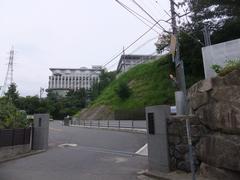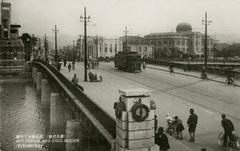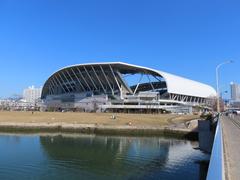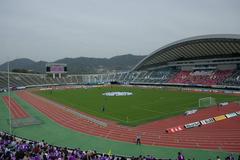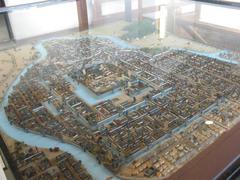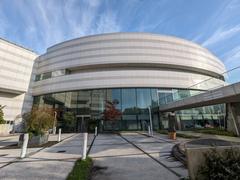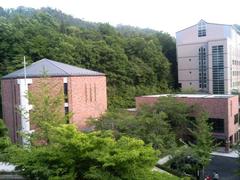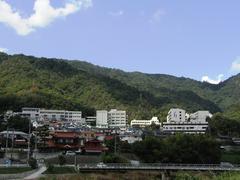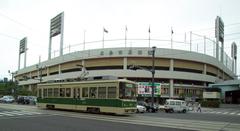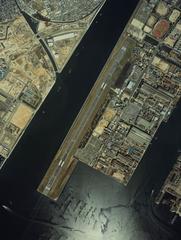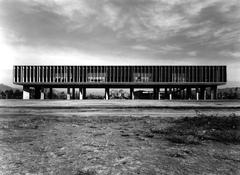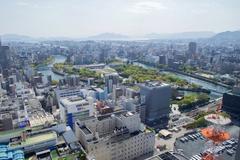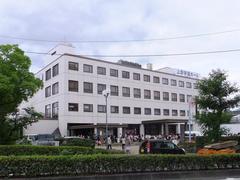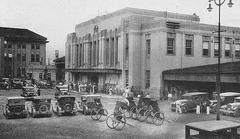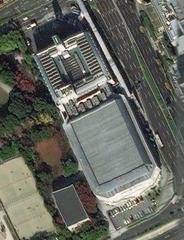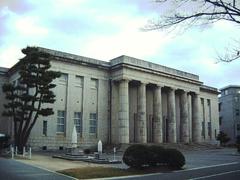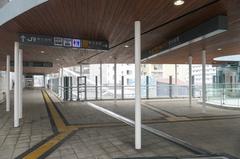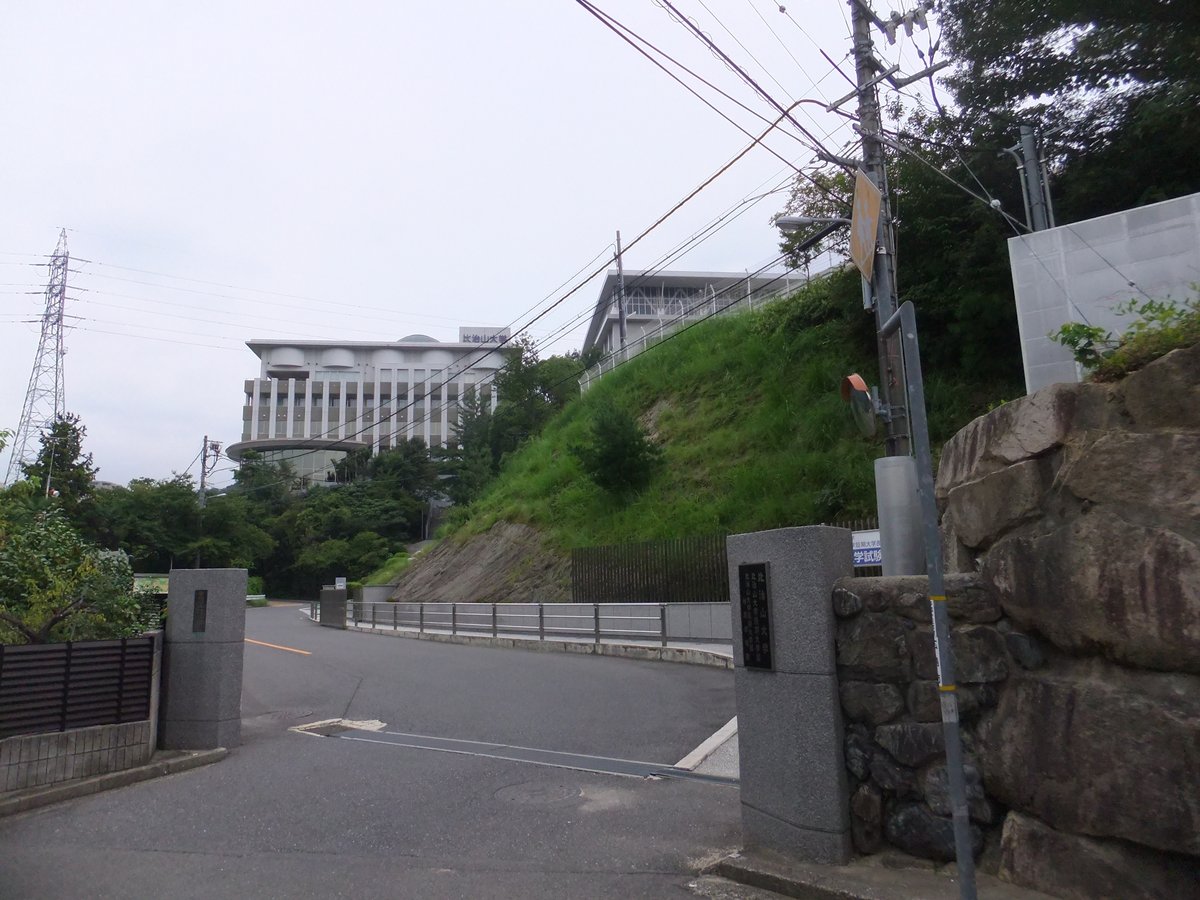
Hijiyama University Hiroshima: Visiting Hours, Tickets, and Travel Guide
Date: 14/06/2025
Introduction
Hijiyama University, located in the heart of Hiroshima, stands as a symbol of resilience, education, and cultural revival. Established in 1939 and officially chartered as a four-year university in 1994, the institution is uniquely positioned on the verdant slopes of Hijiyama Hill. Its proximity to prominent landmarks—including Hijiyama Park, the Hiroshima City Museum of Contemporary Art, and the Hiroshima City Manga Library—makes it an ideal destination for visitors seeking to experience Hiroshima’s legacy of peace, creativity, and community engagement.
This guide provides all the essential information needed for prospective visitors: campus hours, ticketing details for nearby attractions, accessibility, guided tours, travel tips, and insights into Hijiyama University’s educational mission. Additionally, the guide connects readers to Hiroshima’s historical sites, ensuring a comprehensive and enriching travel experience. For further details, consult the official Hijiyama University website, Dive Hiroshima, and Trip to Japan.
Table of Contents
- Introduction
- Historical Development of Hijiyama University
- The Hijiyama Area: History and Culture
- Educational Mission and Community Engagement
- Visiting Hours and Ticket Information
- Accessibility and Visitor Tips
- Guided Tours and Photographic Highlights
- Cultural Significance in Hiroshima’s Renewal
- Visitor Experience and Nearby Sites
- Notable Events and Commemorations
- Architectural and Environmental Features
- Practical Information for Visitors
- Frequently Asked Questions (FAQ)
- Conclusion
Historical Development of Hijiyama University
Hijiyama University (比治山大学, Hijiyama daigaku) began as Hiroshima Showa Women’s Middle School in 1939. Originally a teacher training institution, it was founded on principles of character-building and social responsibility (Hijiyama University - About). The university expanded its programs and became a four-year coeducational institution in 1998, later adding departments for child development and nutrition management (Hijiyama University - Perspective). Its evolution reflects Hiroshima’s broader educational and social recovery after World War II (Wikipedia).
The Hijiyama Area: History and Culture
Situated in Hiroshima’s Minami Ward, Hijiyama University shares its surroundings with Hijiyama Park—a peaceful hilltop green space offering panoramic city views (Dive Hiroshima). The area features significant cultural assets such as the Hiroshima City Museum of Contemporary Art and the Hiroshima City Manga Library, creating a nexus of art, education, and remembrance (Trip to Japan). Remnants of wartime Hiroshima, including a former army cemetery and WWII-era structures, provide tangible links to the city’s past.
Educational Mission and Community Engagement
The university’s mission is rooted in the ideals of peace, community involvement, and the nurturing of socially responsible individuals. Hijiyama University actively engages in projects and public events that connect academic pursuits with Hiroshima’s legacy as a “City of Peace” (Hijiyama University - Perspective). Its programs in contemporary culture, child development, and nutrition underscore its commitment to Hiroshima’s social revitalization.
Visiting Hours and Ticket Information
Hijiyama University
- Campus Hours: Open to visitors typically from 8:30 AM to 5:00 PM on weekdays. Some academic buildings may have restricted access during classes or events.
- Entry: Free. No tickets required for general visits.
Nearby Attractions:
- Hiroshima City Museum of Contemporary Art: Tuesday–Sunday, 9:30 AM–5:00 PM (last admission 4:30 PM), closed Mondays/holidays. Adult tickets: ~400 yen; discounts for students/seniors.
- Hiroshima City Manga Library: Tuesday–Sunday, 10:00 AM–6:00 PM; closed Mondays. Free admission.
- Hijiyama Park: Open year-round, 24 hours. Free entry.
Accessibility and Visitor Tips
Hijiyama University and surrounding sites are accessible via Hiroshima’s public transport network:
- Tram: Nearest stop is Hijiyama-shita Station on the Hiroden Ujina Line; a 10–15 minute uphill walk leads through scenic parkland.
- Bus: City buses with English signage serve the area.
- Taxi: Available and convenient for those with mobility concerns.
- Walking/Bicycle: Hiroshima is bicycle-friendly, though the university sits on a hill.
The campus and park feature accessible pathways and ramps, but some older buildings may have limited accessibility. It is advisable to wear comfortable shoes and check ahead if you have specific accessibility needs.
Guided Tours and Photographic Highlights
Guided walking tours of the Hijiyama area are available on the fourth Saturday of even-numbered months. These 2.5-hour tours (about 3 kilometers) encompass the university, park, and museums, costing 500 yen per person (includes materials/insurance). The meeting point is Hijiyama Trailhead (Hijiyama Koban-mae), concluding at the Hijiyama Skywalk (Dive Hiroshima).
Photographers will find the park’s summit, landscaped gardens, and integration of modern architecture with natural surroundings especially appealing during cherry blossom season and autumn.
Cultural Significance in Hiroshima’s Renewal
Hijiyama University embodies Hiroshima’s journey from devastation to hope, education, and peace. Its campus, nestled within a culturally rich park, underscores the city’s commitment to honoring its past while fostering creativity and learning (Dive Hiroshima). Collaborative events and exhibitions with neighboring institutions often explore themes of memory and artistic expression.
Visitor Experience and Nearby Sites
Visiting Hijiyama University offers a multifaceted experience—academic, cultural, and contemplative. The campus and park connect visitors to Hiroshima’s story of renewal, while proximity to sites like the Hiroshima Peace Memorial Park, Hiroshima Castle, and Shukkeien Garden (all easily accessible) enhances the itinerary (Japan Travel).
Notable Events and Commemorations
Annual peace ceremonies, art festivals, and public lectures held in and around Hijiyama University highlight Hiroshima’s enduring commitment to harmony and remembrance, fostering dialogue among visitors and locals.
Architectural and Environmental Features
The university’s architecture is designed to harmonize with Hijiyama Park’s natural beauty. Green spaces, walking paths, and public art installations invite reflection and reinforce the institution’s connection to both nature and culture (Trip to Japan).
Practical Information for Visitors
- Getting There: Accessible by tram (Hijiyama-shita Station), bus, taxi, or bicycle from central Hiroshima and Hiroshima Station.
- Amenities: On-campus cafeterias (affordable meals), restrooms, and rest areas are open to visitors during university hours.
- Best Time to Visit: Spring (late March–early April) for cherry blossoms; autumn (October–November) for foliage.
- Etiquette: Maintain quiet in academic areas; follow posted guidelines.
Frequently Asked Questions (FAQ)
Q: What are the visiting hours for Hijiyama University?
A: Campus grounds are open weekdays, typically 8:30 AM–5:00 PM; building access may be restricted.
Q: Are tickets required for entry?
A: No tickets for the university or Hijiyama Park. Museums have separate ticketing policies.
Q: Is the university accessible for people with disabilities?
A: Most campus areas and the park offer accessible pathways, but check ahead for specific building access details.
Q: Are guided tours available?
A: Yes, guided walking tours of the area are offered regularly with advance booking recommended.
Q: Which historical sites are nearby?
A: Hiroshima Peace Memorial Park, Hiroshima Castle, and Shukkeien Garden are within easy reach.
Conclusion
Hijiyama University stands as a testament to Hiroshima’s capacity for renewal, blending education, culture, and scenic beauty. Visitors can immerse themselves in the city’s compelling narrative through campus exploration, guided tours, and proximity to landmark cultural and historical sites. Plan your visit for cherry blossom or autumn foliage seasons, leverage Hiroshima’s efficient transport, and consult the university’s official channels for up-to-date visitor information.
For detailed travel planning and current events, visit the Hijiyama University official website and explore additional resources such as Hiroshima Vibes and Japan Travel.
Sources and Official Links
- Hijiyama University, Official Website
- Dive Hiroshima, Travel Feature
- Trip to Japan, Top Things to Do in Hiroshima
- Hiroshima Vibes, Hijiyama Park Overview
- Japan Travel, Hiroshima Complete Guide
- Edarabia, Hijiyama University Profile
- Hiroshima City Manga Library
- Japanrar, Transportation and Student Life
